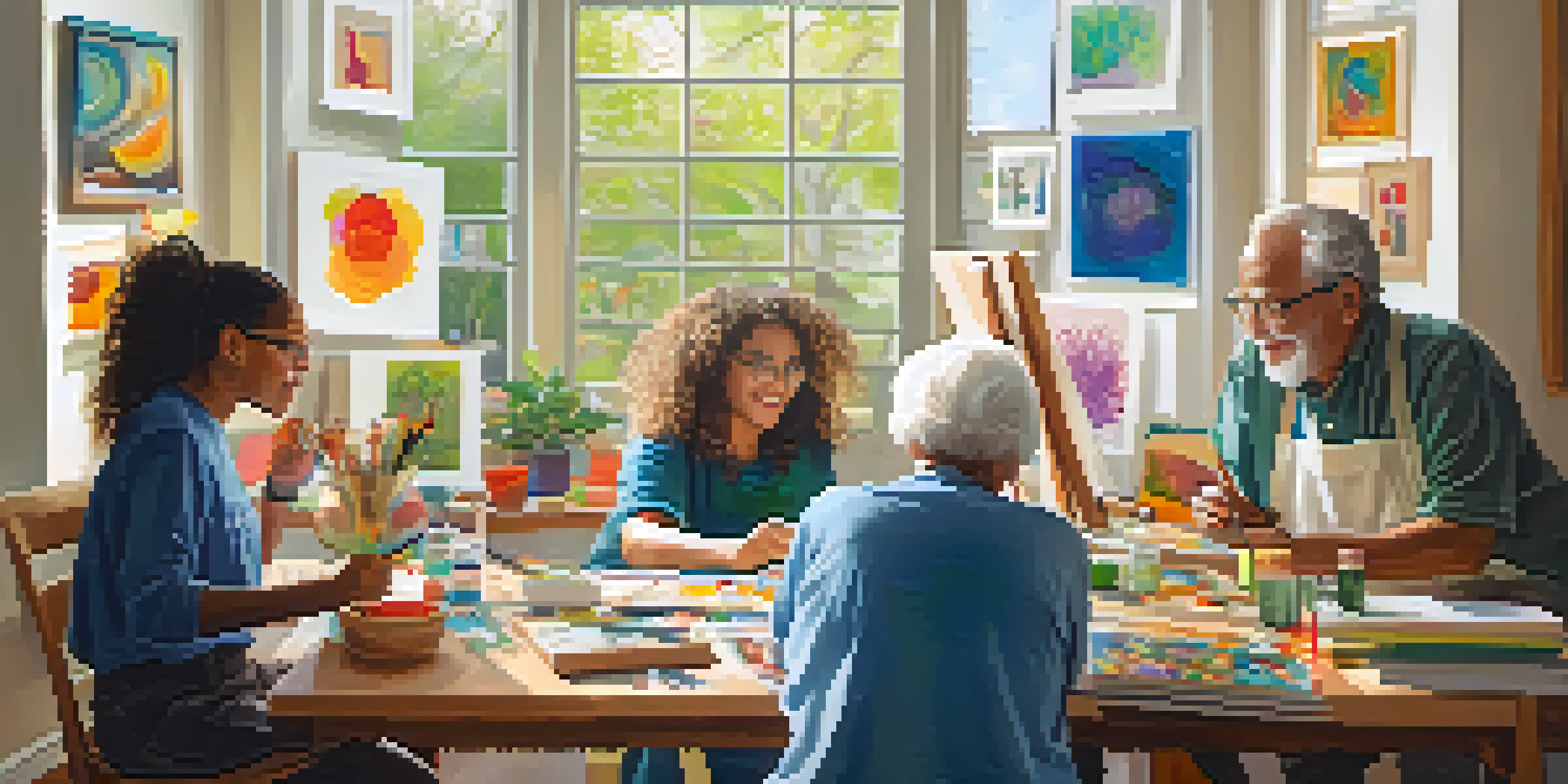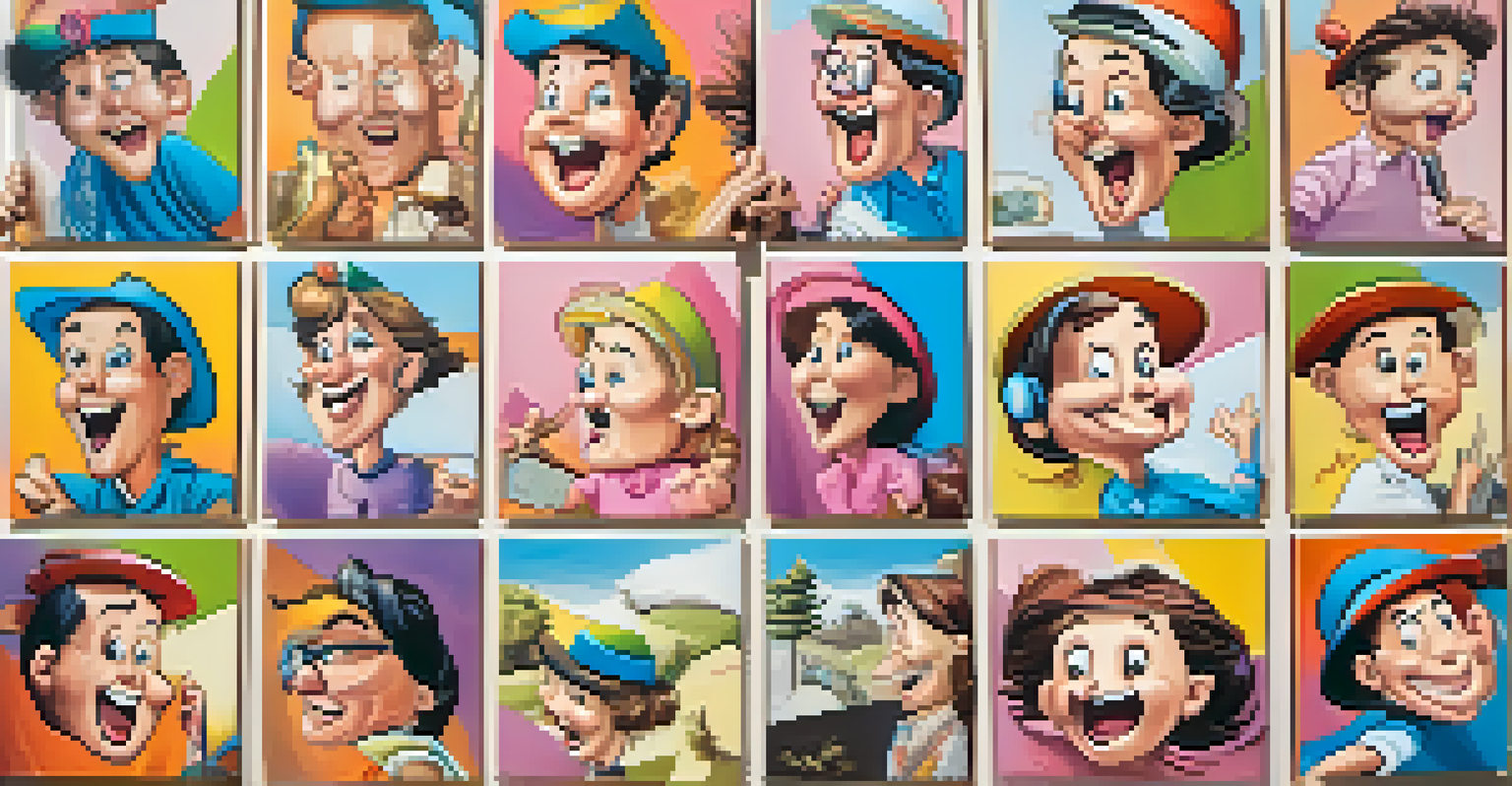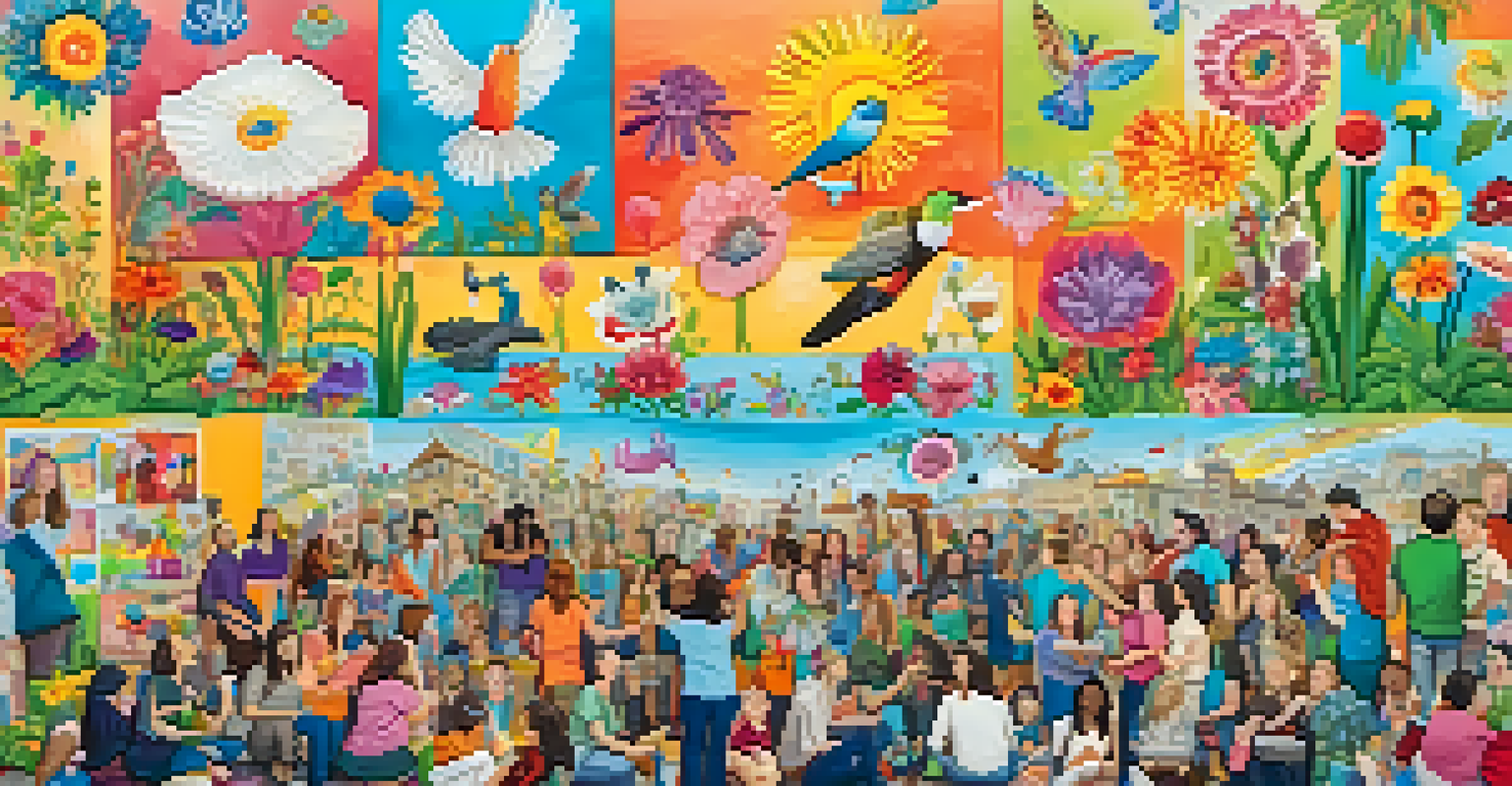The Role of Humor in Art Therapy and Healing

Understanding the Basics of Art Therapy
Art therapy is a therapeutic practice that uses creative expression to improve emotional well-being. Through various forms of art, individuals can explore their feelings, process experiences, and communicate in ways that words may fail. The beauty of art therapy lies not just in the creation of art, but in the journey of self-discovery it facilitates.
Humor is mankind's greatest blessing.
Incorporating humor into this process can significantly enhance its effectiveness. Laughter and creativity often go hand in hand, and when clients feel comfortable and relaxed, they tend to express themselves more freely. This open environment fosters deeper connections between the therapist and the client, paving the way for healing.
For instance, a client who feels overwhelmed by their emotions might find relief in drawing silly caricatures of their feelings. This playful approach not only lightens the mood but also provides a fresh perspective on serious issues, making them easier to tackle.
The Importance of Humor in Healing
Humor has a unique ability to shift our perspectives and alleviate stress. It acts as a natural coping mechanism that can lighten heavy emotional burdens. In the context of therapy, laughter can serve as a bridge, connecting individuals with their feelings without the weight of seriousness that often accompanies deep emotional work.

When clients engage in humorous activities during art therapy, they often find it easier to confront difficult emotions. For example, painting a funny scene related to a painful memory can create distance from the pain, making it less daunting to address. This technique allows for a safer exploration of emotions while promoting resilience.
Art Therapy Enhances Emotional Healing
Art therapy utilizes creative expression to help individuals explore feelings and foster self-discovery.
Moreover, humor can strengthen the therapeutic alliance between the client and the therapist. Shared laughter fosters trust and camaraderie, encouraging clients to open up about their experiences, leading to more effective healing.
Creating a Safe Space for Humor
For humor to be effective in art therapy, it’s essential to establish a safe and supportive environment. Clients must feel comfortable enough to express themselves without fear of judgment. This sense of safety allows them to explore humor in their art, enhancing their overall therapeutic experience.
Laughter is the shortest distance between two people.
Therapists play a crucial role in cultivating this environment. They can introduce light-hearted activities that encourage laughter while remaining sensitive to the client's emotional state. A simple icebreaker or a funny prompt can set a positive tone for the session.
Furthermore, humor can be tailored to suit individual clients. What one person finds amusing, another may not. By understanding each client’s unique sense of humor, therapists can create personalized experiences that resonate deeply, making the healing process more engaging and effective.
Using Humor to Address Trauma
Trauma can often feel insurmountable, leaving individuals feeling trapped in their pain. Incorporating humor into art therapy can serve as a vital tool for addressing traumatic experiences. It opens up avenues for discussion and exploration that might otherwise feel too painful to approach directly.
For example, a client might create a comic strip depicting their trauma in a lighthearted way. This process not only allows them to externalize their pain but also enables them to reclaim their narrative through humor. By reframing their experiences, clients can begin to heal and move forward.
Humor Boosts Therapeutic Connection
Incorporating humor in therapy creates a safe space, allowing clients to confront difficult emotions more easily.
Additionally, humor can help to normalize the trauma experience. When clients see that they can laugh about their struggles, it reduces feelings of isolation and shame. This shift in perspective can be incredibly empowering, reminding them that they are not alone in their journey.
The Science Behind Humor and Healing
Research has shown that humor can significantly impact mental health and emotional well-being. Laughter triggers the release of endorphins, the body’s natural feel-good chemicals, which can enhance mood and reduce stress. In art therapy, this physiological response can create a more conducive environment for healing.
Moreover, studies have indicated that humor can improve interpersonal relationships, which is vital in a therapeutic context. A solid therapeutic relationship can lead to better outcomes, making humor an essential ingredient in this dynamic. When clients feel more connected to their therapist, they are more likely to engage fully in the healing process.
Ultimately, the science supports what many have intuitively known: laughter truly is a powerful medicine. By integrating humor into art therapy, we can harness this power to promote emotional resilience and recovery.
Examples of Humor in Art Therapy
In art therapy sessions, humor can manifest in many delightful ways. Clients might engage in playful activities like doodling funny characters or creating exaggerated self-portraits to highlight their quirks. These lighthearted projects not only spark joy but also encourage self-acceptance and reflection.
Another example is using humorous prompts for creative writing or storytelling. Clients can be invited to write a funny story about a challenging experience, allowing them to find levity in serious situations. This technique not only promotes creativity but also helps to reframe their narrative positively.
Laughter Promotes Resilience and Growth
Humor not only lightens the therapeutic process but also empowers individuals to navigate their challenges with a positive outlook.
Additionally, group therapy sessions can benefit from humor through collaborative art projects. Laughter shared among peers can foster a sense of community and belonging, reinforcing the notion that healing doesn’t have to be a solitary journey.
Conclusion: The Lasting Impact of Humor in Art Therapy
The integration of humor in art therapy is not just a whimsical addition; it’s a profound tool for healing. By embracing laughter, clients can navigate their emotions more effectively, fostering resilience and growth. This approach not only makes the therapeutic process more enjoyable but also encourages deeper self-exploration.
As individuals learn to see the lighter side of their struggles, they can cultivate a more positive outlook on life. Humor becomes a lens through which they can view their challenges, making them feel more manageable and less intimidating. This shift can lead to lasting changes in their emotional well-being.

Ultimately, the role of humor in art therapy highlights the importance of joy in the healing process. By creating spaces that celebrate laughter, we can empower individuals to embrace their journey toward healing with openness and positivity.